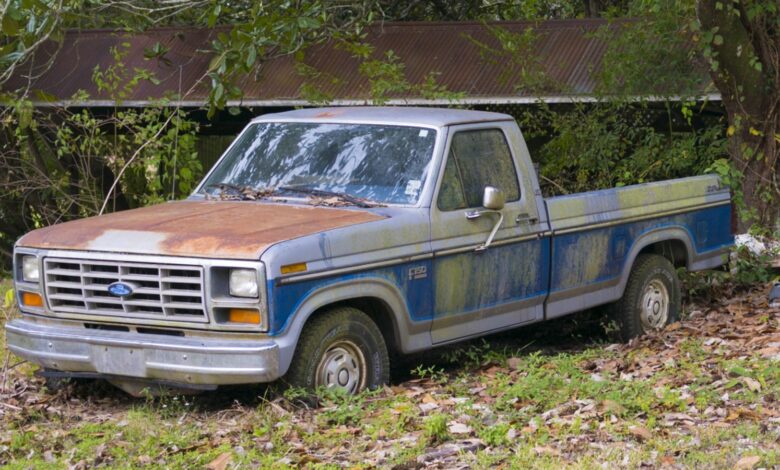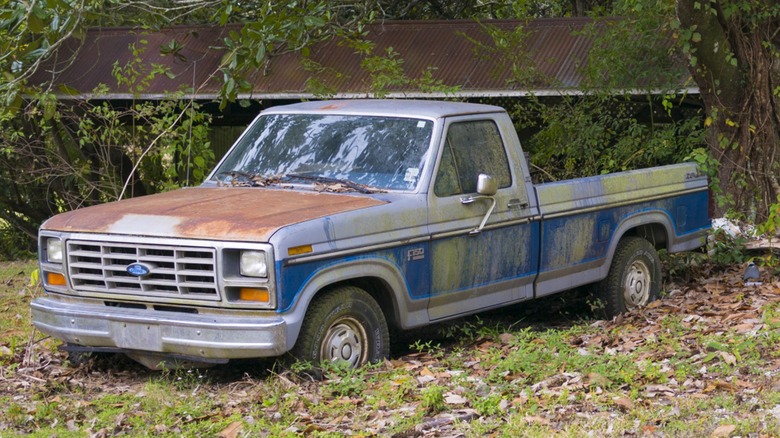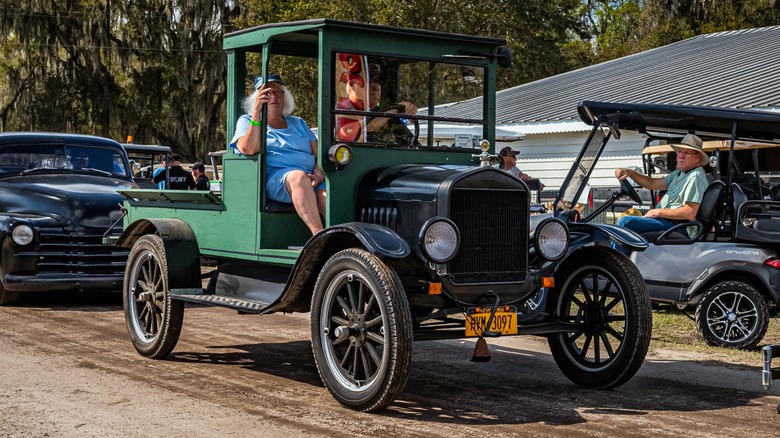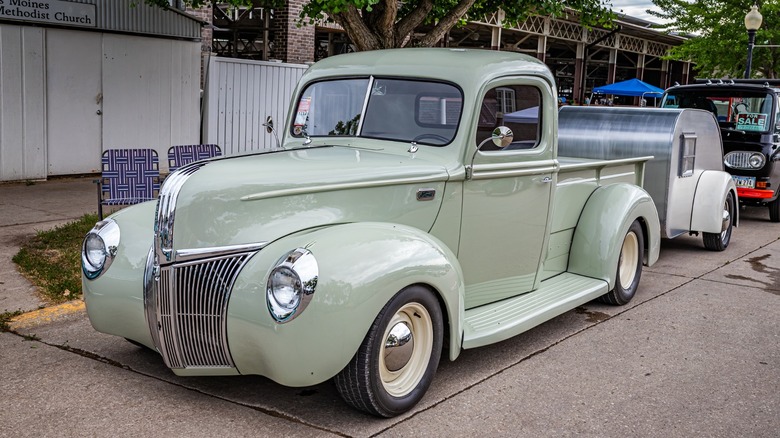5 Of The Cheapest Trucks Ford Ever Made


Tim Graham/Getty
You can’t go wrong with Ford if you’re looking for a cheap, reliable, and durable truck. Ford trucks tend to last many years and often have a low cost of ownership. That’s why the Ford F-150 has been the best-selling truck in the U.S. from 1981 until today.
But you’re not probably looking for the fanciest, most expensive variants if you’re on a budget. Instead, you’ll likely focus on the basest of the base models if you want a brand-new vehicle. Or, if you need to go cheaper, you could settle for a second-hand Ford, and then you could just go and modify your truck later.
Our parents and grandparents probably had the same idea — buy the most affordable truck to get a mode of transport and upgrade to something better when they had money. So, if you want to know what they drove, these are some of the cheapest Ford trucks you could get back in the day.
1927 Ford Model TT

Different_brian/Getty
The Ford Model T was the first mass-produced car. Although we mostly know it as a passenger car, Ford recognized the needs of farmers and other professionals for a vehicle they could use for work and haul their goods or equipment. So, the Ford Motor Company produced the Ford Model TT — a truck based on the Ford Model T.
It first came out in 1917 with a $600 sticker price — about $18,418 in 2024 dollars. However, many other models from Chevrolet and other automakers were already in the market, thus necessitating Ford to drop the TT’s price to $381 to remain competitive — equal to $6,848 today.
When the Ford Model T, which launched in 1908, was deemed obsolete in 1927, it was replaced by the Ford Model A in 1927 and superseded by the Ford Model B in 1932. Ford also launched two newer trucks derived from these models — the Model AA and the Model BB — retaining the practice of using double letters for its commercial vehicles.
1937 Ford Model 73
The 1937 Ford is the company’s first significant visual change it made to its cars in almost 30 years. We no longer get the previous models’ floating lights, squared-off grill, and upright windshields. Instead, we get a sleeker engine compartment, a more closed-off fender, split windshields, and an overall more rounded affair.
This gave the ’37 Ford Model 73 a more modern look, differentiating it from turn-of-the-century trucks. It was also the first Ford pickup that came standard with a V8 engine, giving drivers more torque and power.
Ford started selling this truck in 1935, but its sticker price hovered at $480 until it released the $470 Model 73 in 1937 (about $10,428 in 2024). These would be some of the most affordable vehicles you could get in the market back then, as pickups are considered work vehicles and don’t have the creature comforts you’d find in a sedan or coupe.
[Featured Image by Jayron32 via Wikimedia Commons | Cropped and Scaled | CC BY-SA 4.0]1941 Ford 1NC Pickup

Different_brian/Getty
1941 was the last full year of automobile production before America got dragged into World War II, and Ford had to make tanks instead of pickup trucks. So, when production restarted in 1946, the Ford 1NC Pickup practically looked the same, except for its front clip, which was now wider and flatter.
The 1941 1NC Pickup is far rounder than the Model 73 it replaced. It lost the tall, narrow grill up front in favor of a lower, wider one. Its headlights were also finally embedded into the front fenders, making the pickup truck more aerodynamic than ever before. It had a $613 starting price, about $150 more than the truck it replaced. If this truck were still for sale new, its price today would be $13,395.
Despite being a work vehicle, the Ford Pickup featured many chrome fittings, mainly in the bumper, front grills, and headlights. This made the truck look more stylish than its predecessors. However, the Ford 1NC Pickup was also the last model based on a production sedan because, in 1948, Ford introduced the Ford F-series — its first vehicle made on a dedicated truck platform.
1953 Ford F-100
Ford’s first all-new pickup truck after World War II arrived in 1948 with the F-1. Although it retained some of the styling cues of the 1941 Ford Pickup, it was far more modern, with its headlights now incorporated into the grill. It also has a bigger windshield and rear window for better visibility. It was priced at $1,239 — $16,831 in 2024.
The second-generation Ford F-series pickup, now called the F-100, was priced a bit higher at $1,362. However, when you count inflation, that just equates to $15,498 in 2024. So, that actually makes the second-generation F-series truck more affordable than the F-1.
Except for the grill, the ’53 F-100’s front clip looks similar to the ’48 F-1. However, its cab has many improvements, like a wraparound windshield for better visibility, a heating and ventilation system, and wider doors. That’s why the ’53 Ford F-100 is one of the most iconic Fords ever built.
[Featured Image by AlfvanBeem via Wikimedia Commons | Cropped and Scaled | CC0 1.0]1957 Ford F-100
The 1957 Ford is the third generation of the F-series Ford. It’s also the first Ford truck to resemble the modern pickups we see today, with its fenders incorporated into its bodywork with the so-called Styleside body. This truck can be had with either a 3.7-liter Inline-6 or a 4.5-liter V8 engine with a choice of manual or automatic transmission.
Another change that the ’57 Ford F-100 brought is its suspended-pedal design. This meant that the accelerator, brake, and clutch weren’t connected to the engine via holes in the floor, making the cabin more secure against dust, dirt, and fumes. This particular vehicle would run you $1,631 on release, which is about $18,061 today.
These are a few of the cheapest trucks that Ford made, and it’s unlikely we’ll see new vehicles with prices like these again. After all, increasing safety and environmental requirements means car makers must spend more to make current truck models road-legal.
[Featured Image by JOHN LLOYD via Wikimedia Commons | Cropped and Scaled | CC BY 2.0]
